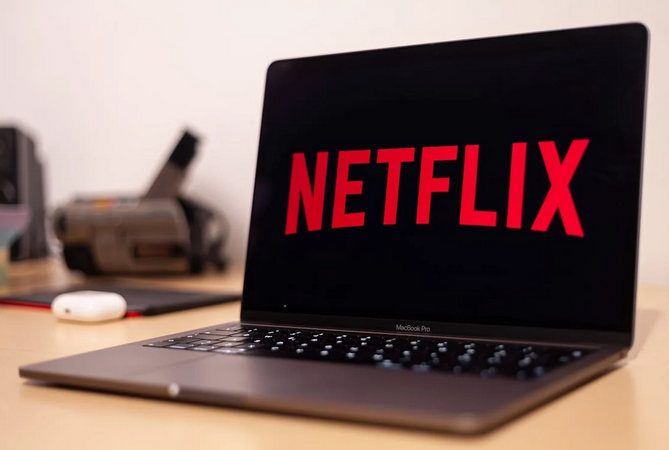You glance at your bank statement and something doesn’t add up. A couple of $9.99 charges here, a $6.99 there, maybe even a mystery $14.99 you can’t quite place. It doesn’t feel like much in the moment, but over time, these “ghost expenses” add up—slowly draining your bank account without you really noticing. These are the forgotten subscriptions, free trials that quietly became paid plans, and auto-renewing services you don’t use anymore. In an age where everything runs on a subscription model, it’s easier than ever to lose track. So let’s shine a light on these financial phantoms and see how you can take control of your spending.
When Subscriptions Multiply Without You Noticing

Most of us have at least a handful of subscriptions: streaming services, music platforms, fitness apps, cloud storage, and maybe even a meditation or meal-planning app. The problem is that these services often start with low monthly fees, making them feel harmless. But once you stack them all together—especially if you’re not actively using them—they become a silent budget killer. Many people underestimate how many active subscriptions they have, which means they’re spending more than they think, often on things they no longer need or remember signing up for.
Free Trials Aren’t Really Free
We’ve all been tempted by free trials. One click and you get a week or a month of unlimited access to a new app, a service, or some exclusive content. But these trials are designed to convert—meaning, unless you cancel in time, you’re automatically billed. And if you’ve forgotten about it? Congratulations, you just bought something without even realizing it. These sneaky transitions from free to paid can become ghost expenses when they go unnoticed for months, or even years.
Auto-Renewals Keep the Haunting Alive

Subscription services love auto-renewal. It’s convenient for them—and sometimes for you—but it’s also a surefire way to keep charging you long after you’ve stopped using a product. Unless you actively cancel or disable renewal, most platforms will keep billing you indefinitely. This means that the workout app you used twice in January might still be draining $12 a month from your account every month. Auto-renewal isn’t evil by design, but it creates a “set it and forget it” trap that can quietly haunt your finances.
The Emotional Cost of Convenience
We’re often sold subscriptions on the promise of convenience—no ads, premium content, “one less thing to think about.” But ironically, this ease can make it harder to recognize wasteful spending. It feels easier to ignore a small charge than to log into a platform, find the cancellation page (which they often hide), and confirm three times that yes, you really want to leave. There’s also guilt involved—like canceling a language app you swore you’d use every day. The emotional friction of unsubscribing leads many of us to procrastinate, even when we know the service isn’t worth it anymore.
How to Exorcise Those Ghost Charges

The good news? You can take back control. Start by reviewing your bank or credit card statements for the last few months. Highlight any recurring charges, especially the ones you don’t recognize right away. Then log into those services and ask yourself honestly: do I still use this? Is it adding value to my life? If not, cancel it. Some apps can help you track and manage subscriptions automatically—just be sure to check if those apps come with a price tag themselves! Taking one hour to do this could save you hundreds over the course of a year.
Ghost expenses might be out of sight, but they don’t have to stay out of mind. By getting clear on what you’re actually paying for—and why—you can stop wasting money on subscriptions that no longer serve you. It’s not about giving up convenience; it’s about making intentional choices with your money. So the next time you see a mysterious charge pop up, don’t ignore it. Chase down the ghost, cancel what you don’t need, and give your budget a little breathing room. Your wallet will thank you.…








 Every business owner dreams of seeing their company grow and thrive. But how do you turn that dream into a reality? One key step is identifying growth opportunities within your industry and market. To begin, it’s important to conduct thorough research and analysis. This involves studying market trends, customer behavior, and competitors’ strategies. By understanding the landscape in which your business operates, you can pinpoint potential areas for expansion or improvement. Additionally, keep a keen eye on emerging technologies and changing consumer demands.
Every business owner dreams of seeing their company grow and thrive. But how do you turn that dream into a reality? One key step is identifying growth opportunities within your industry and market. To begin, it’s important to conduct thorough research and analysis. This involves studying market trends, customer behavior, and competitors’ strategies. By understanding the landscape in which your business operates, you can pinpoint potential areas for expansion or improvement. Additionally, keep a keen eye on emerging technologies and changing consumer demands.


 In developed countries like the United States, we increasingly see a move away from cash payments to digital and card-based payments. It has made it easier for customers to make payments without carrying large amounts of cash around.
In developed countries like the United States, we increasingly see a move away from cash payments to digital and card-based payments. It has made it easier for customers to make payments without carrying large amounts of cash around. Another recent innovation in the payment space is contactless payments, which allow customers to make payments by simply waving their card or phone near a reader. This technology is becoming increasingly popular due to its convenience and ease of use.
Another recent innovation in the payment space is contactless payments, which allow customers to make payments by simply waving their card or phone near a reader. This technology is becoming increasingly popular due to its convenience and ease of use.
 Another factor to consider when choosing a pay stub maker is their credibility. You want to ensure that they are fully experienced in creating unique and accurate pay stubs for your business. It’s also essential that you confirm whether or not they offer any type of guarantee with their service since this will indicate if they stand behind what services they are offering. Be sure to look for a pay stub maker that provides personalized services, which means they are more likely to give you the best options available for your business needs.
Another factor to consider when choosing a pay stub maker is their credibility. You want to ensure that they are fully experienced in creating unique and accurate pay stubs for your business. It’s also essential that you confirm whether or not they offer any type of guarantee with their service since this will indicate if they stand behind what services they are offering. Be sure to look for a pay stub maker that provides personalized services, which means they are more likely to give you the best options available for your business needs.
 Sending an email to ask for your credit score is often the easiest way to get it. If you’re looking at buying a home in Mexico, you’ll need good credit (650+) and a stable income (35 times the monthly payment on the house) to qualify for most mortgages. One way to secure a better interest rate and lower monthly payment is by raising your credit score, which typically means paying your bills on time for at least six months. You may even be able to get pre-approved or guaranteed financing if you have an established relationship with the bank (e.g., a good customer). As long as the property isn’t in the name of a company, you should be able to get your loan.
Sending an email to ask for your credit score is often the easiest way to get it. If you’re looking at buying a home in Mexico, you’ll need good credit (650+) and a stable income (35 times the monthly payment on the house) to qualify for most mortgages. One way to secure a better interest rate and lower monthly payment is by raising your credit score, which typically means paying your bills on time for at least six months. You may even be able to get pre-approved or guaranteed financing if you have an established relationship with the bank (e.g., a good customer). As long as the property isn’t in the name of a company, you should be able to get your loan. Bank loans are a great place to start, especially if you have a good relationship with your bank. If that’s not an option for you, it is time to look into private lenders and brokers who can help guide you through the process. It is essential to find a reputable lender, one that knows the industry and has your best interests at heart. Not only do you want someone who can get you qualified for a loan, but also help guide you through all of the complexities of buying property in Mexico. Buying real estate is exciting and daunting, so it’s essential to have someone to help you navigate the process and protect your interests.
Bank loans are a great place to start, especially if you have a good relationship with your bank. If that’s not an option for you, it is time to look into private lenders and brokers who can help guide you through the process. It is essential to find a reputable lender, one that knows the industry and has your best interests at heart. Not only do you want someone who can get you qualified for a loan, but also help guide you through all of the complexities of buying property in Mexico. Buying real estate is exciting and daunting, so it’s essential to have someone to help you navigate the process and protect your interests. Down payment is also known as an initial investment. It is a sum of money you pay at the beginning to get something in return, the home loan amount required. It is essential to understand the requirements before applying. You can make a down payment of 30% or more on the house’s purchase price but not less than 20%. In Mexico, banks usually ask for a 25% deposit. If you have a good credit score and assets, they can even ask for less than 20%. It would help if you always ask your loan officer for the possible monthly payment to ensure you can afford it. It is better to have a lower down payment with higher monthly payments rather than the high initial investment and low or no monthly installment options available for your budget.
Down payment is also known as an initial investment. It is a sum of money you pay at the beginning to get something in return, the home loan amount required. It is essential to understand the requirements before applying. You can make a down payment of 30% or more on the house’s purchase price but not less than 20%. In Mexico, banks usually ask for a 25% deposit. If you have a good credit score and assets, they can even ask for less than 20%. It would help if you always ask your loan officer for the possible monthly payment to ensure you can afford it. It is better to have a lower down payment with higher monthly payments rather than the high initial investment and low or no monthly installment options available for your budget.

 What people love about applying for a payday loan is the low-interest rate they offer. It is as you would expect because their business is meant to be short-term. Any other loan, and you’re looking at a different interest rate, but since the whole idea of this type of loan is that it’s just for two weeks, they can afford offering such low rates on them. Of course, if you don’t pay within those 14 days or so, you will get a penalty, but that’s just a part of the deal.
What people love about applying for a payday loan is the low-interest rate they offer. It is as you would expect because their business is meant to be short-term. Any other loan, and you’re looking at a different interest rate, but since the whole idea of this type of loan is that it’s just for two weeks, they can afford offering such low rates on them. Of course, if you don’t pay within those 14 days or so, you will get a penalty, but that’s just a part of the deal.